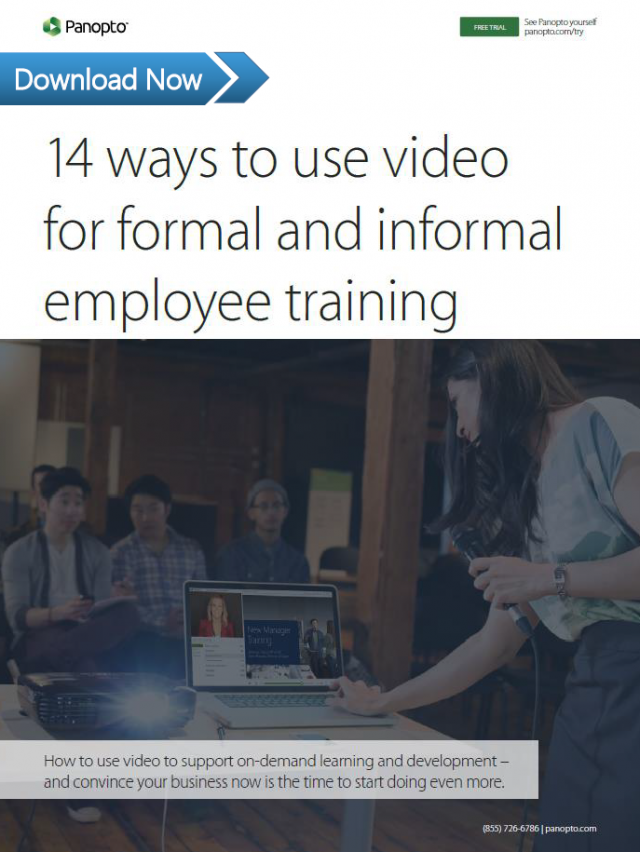- Onboarding
You’re Not Doing Enough To Train And Develop Your Employees

Whether you prefer to call it “disruption,” a “paradigmatic shift,” or simply, “change,” there can be little doubt that the modern world is being reimagined. New products and processes have led to never-before-possible efficiencies and conveniences, but at the same time, have begun fomenting a troubling sense of uncertainty and distrust among workers.
A workforce that can adapt to changing environments and acquire new skills is necessary to be successful in the future — both for the employee and the organization — and this is where many companies are falling short.
According to a recent training survey by the American Psychological Association (APA), 43 percent of employed Americans say they are concerned about the changing nature of work and what it will take for individual employees to keep pace.
This isn’t a novel result. Harvard Business Review (HBR) reports that training and development consistently emerges as one of the areas employees are least satisfied with and lack of opportunity for growth, and advancement is second only to low pay as a source of work stress.
On the whole, businesses are actively working to train and develop their employees. Sixty-one percent of U.S. employees say their employer is helping them develop the technical and soft skills they’ll need in the future. And half say their employer provides adequate opportunities for internal career advancement.
There is, however, still a significant gap in training and development programs. According to HBR, more than one-third of U.S. workers report they haven’t done anything to develop new skills in the past year.
Of course, this road runs two ways. Effort is required from both the employee and the employer to make learning successful. However, businesses can be doing better to inspire learning.
Employees want to learn. And they want to be prepared to tackle future challenges in their jobs. They feel valued when companies invest in their professional development, offering opportunities to develop the technical, management and leadership skills they believe they will need in the future.
But professional development doesn’t take place in a vacuum. Beyond the availability of training resources themselves, employees routinely note the importance of being able to dedicate time to complete training and better resources for applying new skills.
Companies today know that investing time and resources in developing employees offers many benefits to the business, from reducing turnover and brain drain to accelerating innovation. So how can more businesses improve training and development program offerings and make smarter investments that can help support and scale employee learning initiatives?
In a word: video.
Video helps organizations tackle several challenges that often can cause training programs to fail.
And video can extend the reach and effectiveness of your employee training programs, in turn fostering a better learning environment that supports your business goals, both now and in the future.
3 Tips For Building A Better Learning Environment For Employees With Video

1. Help Employees Find More Time For Training and Development
Employees today are balancing a variety of routine responsibilities, special projects, meetings upon meetings, and more. Daily they are prioritizing the tasks that they feel will add the most value to the business in an already packed work week. Unfortunately, finding time for training and development often falls to the bottom of the list.
Rather than doubling down and attempting to deliver more live training sessions, many businesses have instead seen success by using video to capture instructor-led classrooms, brown bag sessions, and other formal and informal learning opportunities. This enables employees to watch those training sessions on-demand, whenever and wherever it’s most convenient.
Better still, recording and sharing video training is much easier than it used to be with an enterprise video platform. With just a laptop and a webcam, instructors can record (or even live stream) training activities and make them available for employees to watch on any device in full HD — ensuring everyone receives the same learning experience as those who were there in the room.
2. Offer Employees Better Resources For Applying New Skills
For most adult learners, the ability to retain new skills and information is fleeting at best — unless what was learned can be used and applied right away. For trainers, that means ensuring your learners remember your presentation will require two essential steps:
First, it’s important to create opportunities for employees to practice new skills. Role play and other interactive exercises are valuable here, as are quizzes and other quick comprehension checks.
And secondly, you’ll want to plan to record and share your training presentations. Knowing that a recording of your session is available in a secure video library frees the learner from the need to quietly take notes during a training activity, and instead lets them engage more fully with the class content and focus more on the big picture of the material being taught. It also creates a valuable resource they can revisit after a training in which they can review the lesson in the exact way it was originally taught.
Panopto’s enterprise YouTube makes it easy for employees to search inside video content for any word spoken or shown on screen. This enables your team to not only jump to the right video with just a few keystrokes but also to find the exact moment within that video where a specific topic is mentioned. And with Panopto, instructors can also add interactive quizzes to their videos through a simple online video editor. It’s yet another way video can help reinforce the retention of new learnings and skills.
3. Expand Access To Your Entire Workforce
On-demand video-based learning materials let your organization scale in-class training sessions and access to knowledgeable subject matter experts (SMEs) to everyone throughout your organization, no matter where they happen to be located. And more importantly, Panopto’s cloud-based video platform can give you the ability to deliver training to more of your employees without increasing your staff or travel budgets.
Simply record and upload the training sessions you are already holding with Panopto. All of your video content will be indexed for search, so it can be found by employees across the globe as easily as they search the web. Panopto’s automatic speech recognition (ASR) can generate closed captions, which can help break down language barriers. And our interactive video player lets viewers speed up or slow down the video, giving them more control over the content and personalizing their learning experiences.
All of these video-based tools help you expand access to knowledge for your entire workforce. Employees in different locations, with different knowledge levels, different work experiences, and different backgrounds can find answers that may already exist within your organization with a simple search. And learning can be personalized with tools that can help improve learning and comprehension of content within videos.
More Ways To Use Video For Employee Training and Development
Companies around the world have already begun to implement video to support training and development in numerous ways. Video can play a variety of roles,

from standardizing onboarding processes and providing live product demonstrations to fostering social learning and coaching by subject matter experts. Some of the innovative ideas in use today come from experienced trainers, while others come from the employees themselves.
Learn how today’s learning organizations are using video to support and scale their learning and development activities in our latest whitepaper.




